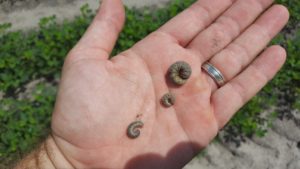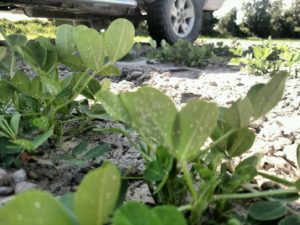There has been a little more talk lately about the insect situation in our crops and Extension specialists have issued a few updates for us to pay attention to.
Granulate cutworm. One of my favorites is back again in in the peanut fields. The cutworm are difficult to find as they are nocturnal feeders. Someone told me they are much easier to find at night with a flashlight, compared to during daylight hours. If you find them they will usually curl up into a “C” shape on the soil surface or in your hand. Our control options look like Besiege, Steward or Prevathon.
Lesser Cornstalk Borer. Entomologists are reporting large flights of the moths which may translate into large populations of LCB larvae if conditions turn dry. However with continued rainfall this should be a non-issue. In hot dry soils, moths lay the eggs in/on the soil and have improved hatching rates. In rainy or irrigated conditions, the eggs face many more challenges and survival rates are low. Recommended control options are Prevathon or Diamond.
Whiteflies. We are seeing a strong start with whiteflies building numbers. Last season we lost some soybean fields locally, to heavy whitefly pressure. Dr. Phillip Roberts, UGA Extension Entomologist, said he will be delivering threshold recommendations to Extension soon and he expects the need to treat more cotton fields this year. Knack is an insect growth regulator that does not kill adults, but inhibits metamorphosis and emergence of adult insects. Additionally, the Knack label only allows one application per season on cotton, and two on soybeans. Timing is everything on this one.
Kudzu Bug. After a few years without concern, the Kudzu bug are back again. According to Kudzubug.org, “Yield data has been collected from 19 replicated trials in Georgia and South Carolina. Yield was numerically reduced in unprotected plots in 16 of 19 trials with an average yield loss of 18 percent and a range from 0-47 percent.” Damage and yield loss is usually more significant in early planted soybeans. The Kudzu bug should be easy to control; about 80% to 95% control with pyrethroid insecticides.


